When you're dicing veggies or prepping chicken, keeping raw and cooked foods separate is key to protecting yourself and your family. Ever wonder how a simple slip in the kitchen could lead to foodborne illness? It often starts with cross-contamination, and it’s easier to prevent than you think! Let’s break down simple, chef-approved steps to keep your kitchen safe, clean, and efficient.
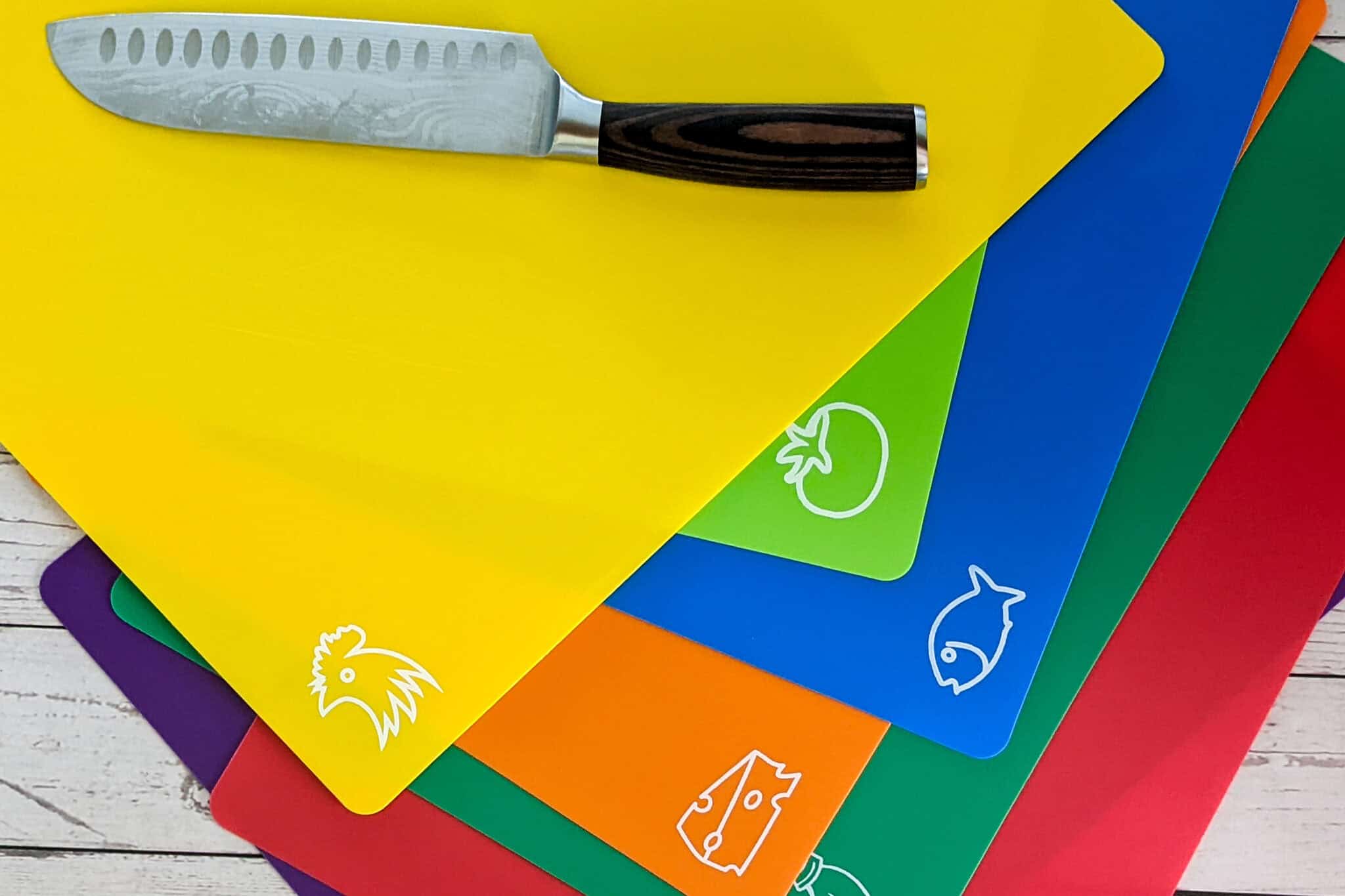
Table of Contents
Jump to:
- What is Cross-Contamination?
- Why This Blog Post?
- 1. Separate Meats, Seafood, and Veggies
- 2. Clean vs. Sanitize — Yes, There’s a Difference
- 3. Safe Storage Practices in the Fridge
- Grab Your Free Cross-Contamination Checklist!
- 4 Common Mistakes to Avoid
- Additional Resources
- Frequently Asked Questions
- More Food Safety Tips
- More Cooking Tips
- Subscribe to the YouTube Channel
- Have a Comment or Question?
What is Cross-Contamination?
Cross-contamination happens when harmful bacteria or allergens transfer from one surface, food, or utensil to another. The most common culprit? Raw meat, poultry, seafood, and even unwashed produce.
A splash from raw chicken here, a shared cutting board there—and suddenly, you’ve invited bacteria like Salmonella, E. coli, or Listeria to dinner.

According to the CDC, 1 in 6 Americans gets sick from foodborne illnesses each year—many cases due to cross-contamination at home.
Why This Blog Post?
As a professional chef, I sometimes forget that what feels like second nature to me—like preventing cross-contamination—isn't always common knowledge for the home cook. My culinary education was shaped by years of professional training and kitchen experience, while many others come from entirely different backgrounds where food safety wasn’t part of the curriculum.
That’s why I’ve made it my mission this year to go back to the basics—not to simplify, but to empower. I want to build a community where we grow together, developing lifelong kitchen skills that improve not just how we cook, but how we live.
By sharing these foundational practices, my goal is to help you take control of your health and happiness in the way I know best—through the art and science of cooking. So let's get into it.
1. Separate Meats, Seafood, and Veggies
One Golden Rule
Keep it separate, always.
- Use color-coded cutting boards—one for raw meat, another for veggies, and a third for cooked foods or bread.
- If you don’t have color-coded boards, label them or designate by material (e.g., plastic for meat, wood for produce).
- Never reuse knives or utensils between raw and ready-to-eat foods without washing them first.

Invest in a set of affordable color-coded boards. It’s a small change that makes a big difference!
-
$13.99Buy Now
My Rating: ⭐⭐⭐
Purchased: 06/07/2022
Update: 08/19/24
My Review: These Fotouzy Cutting Board Mats are fantastic! They adhere well to granite, and I often use the “yellow chicken,” “green banana,” and “red cow” mats to prevent cross-contamination. The color coding helps me keep raw poultry, fruit, and red meat separate, protecting my wooden board from raw juices. They're flexible, easy to clean, and store, and a damp paper towel underneath keeps them in place. You can see them in action in my Chicken Prepping post in Cook's Notebook.
These BPA-free, non-porous mats are dishwasher-safe and feature anti-skid backing for secure use, making them a must-have for any kitchen.
Update 08/19/24: I still have these but prefer the cutting boards over the mats. And the mats are not steady. But they are dishwasher safe and wide enough to cover my wooden cutting board and great for when I zest and need to transfer them instead of scraping them off my board. So, I gave this a 3 out of 5.
We earn a commission if you make a purchase, at no additional cost to you.
04/24/2025 05:14 pm GMT -
$41.99$34.99Buy NowRating: ⭐️⭐️⭐️⭐️⭐️
Purchased: 03/26/2023
My Review: I absolutely love this Plastic Cutting Board Set of 4 with a Storage Stand! The color-coded boards are a lifesaver for preventing cross-contamination, especially when I’m switching between meats and veggies. The plastic is super sturdy, so I don’t have to worry about it flexing while I’m chopping. What really stands out for me is how easy they are to use—after chopping, I slide everything straight into the pot, which keeps my kitchen clean and saves time. Cleanup is such a breeze, too; they go right into the dishwasher without any warping. Plus, the storage stand keeps everything neat and organized. These boards have made cooking so much easier and more enjoyable!
We earn a commission if you make a purchase, at no additional cost to you.
04/24/2025 03:05 pm GMT
2. Clean vs. Sanitize — Yes, There’s a Difference
Many home cooks think wiping down a surface is enough. But cleaning alone doesn’t kill bacteria. I'm a nerd, and this topic alone is so exciting to me. I love explaining this:
- Cleaning removes dirt, food particles, and grease.
- Sanitizing reduces germs to safe levels.
Quick Steps:
- Wash surfaces with hot, soapy water.
- Rinse thoroughly.
- Sanitize using a kitchen-safe sanitizer or a DIY mix (1 tablespoon of unscented bleach to 1 gallon of water).
- Let air dry or use a clean towel.

Even if you're using antimicrobial sponges, you should still replace them regularly—ideally every 1 to 2 weeks.
Why Replace Antimicrobial Sponges Regularly?
- Antimicrobial doesn't mean bacteria-proof. These sponges are treated to slow the growth of bacteria, mold, and mildew—not eliminate them.
- They still trap food particles and grease, which become breeding grounds for bacteria over time, especially in a warm, moist kitchen environment.
- The effectiveness of the antimicrobial treatment decreases with use, especially as the sponge starts to wear down.
Best Practice:
- Separate: Use different sponges for dishes vs. countertops.
- Air Dry: Rinse thoroughly after each use and let them air dry completely.
- Heat it Up: Microwave (wet) for 1 minute or run through the dishwasher on the hottest setting occasionally to help kill bacteria—though this doesn’t replace swapping them out.

If your sponge starts to smell, feel slimy, or fall apart, toss it—no matter how "antimicrobial" it says it is.
|
Our Rating:
3.5
|
Our Rating:
3.5
|
Our Rating:
3.5
|
|
$14.29
|
$14.99
|
$23.90
|
3. Safe Storage Practices in the Fridge
Cross-contamination doesn’t just happen on the counter—it lurks in your fridge too!
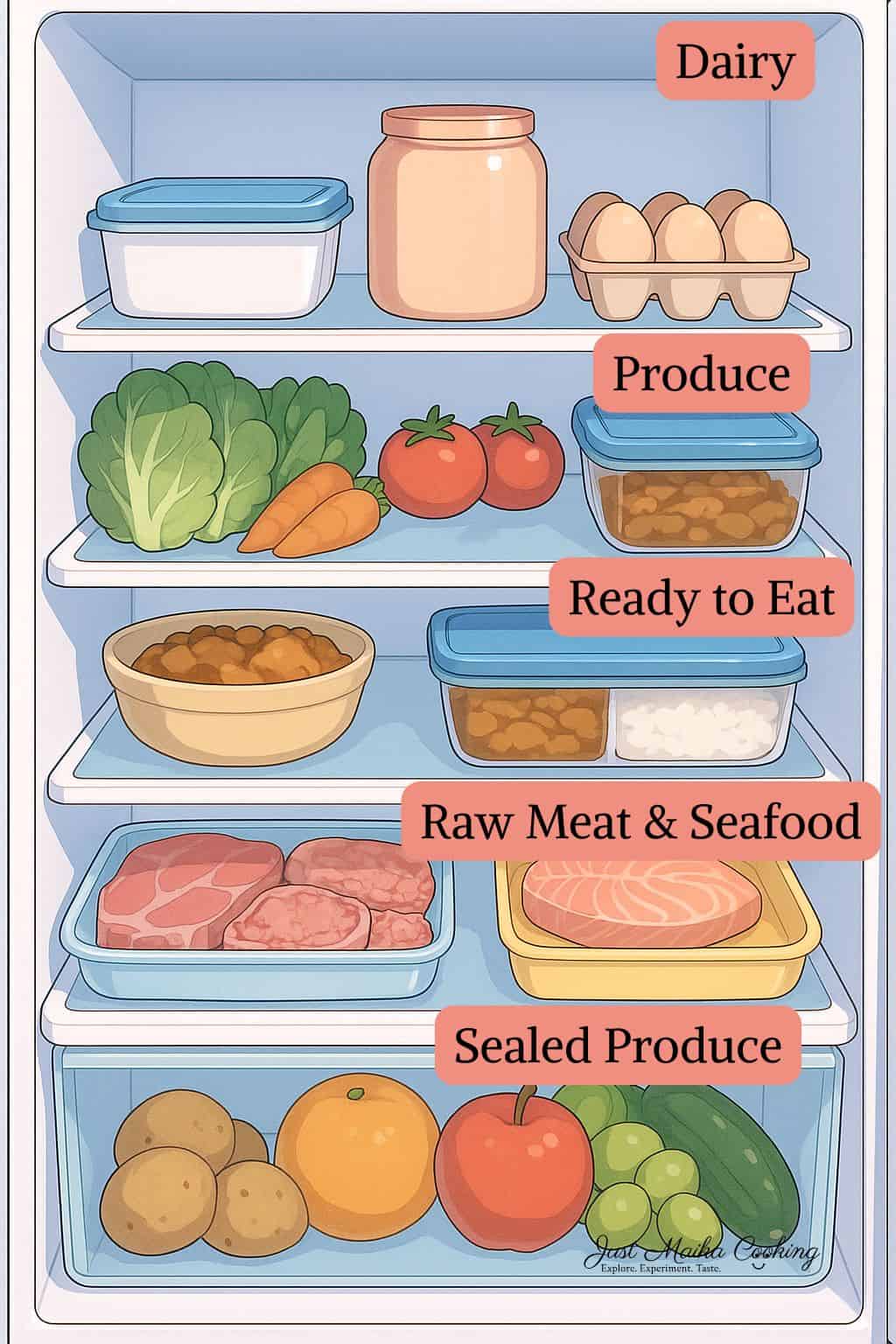
- Store raw meats, poultry, and seafood on the bottom shelf to prevent drips onto other foods.
- Use sealed containers or trays to catch any leakage.
- Keep ready-to-eat foods (like salads or leftovers) on higher shelves.
- Don’t overload your fridge—air circulation keeps temps consistent and food safer.

Your fridge should be set to 40°F (4°C) or below. Use a fridge thermometer to double-check.
Grab Your Free Cross-Contamination Checklist!
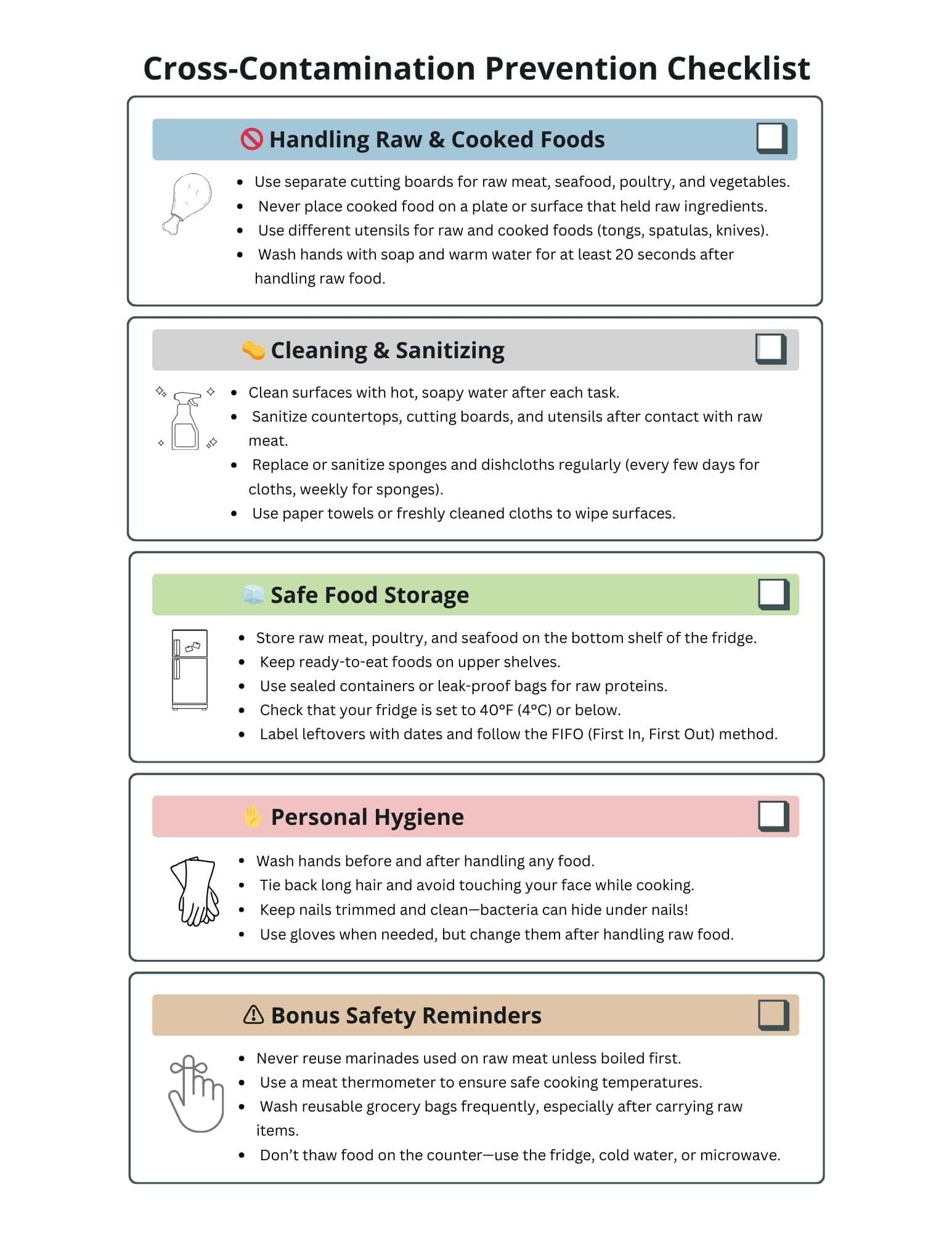
Want a handy reminder for your kitchen? Download my Printable Cross-Contamination Checklist or just view the embed page version and stick it on your fridge or inside a cabinet door.
4 Common Mistakes to Avoid
- Using the same towel to dry hands and clean counters.
- Marinating meat on the counter (always refrigerate!).
- Placing cooked food back on the same plate that held raw ingredients.
- Forgetting to wash reusable grocery bags.
Additional Resources
Frequently Asked Questions
Here, you will find a list of common questions that I have answered. If you have questions, please write them in the comment section below.
No—always wash with soap and hot water, then sanitize if used for raw meat.
Both are safe if cleaned properly, but plastic is easier to sanitize after raw meat.
More Food Safety Tips
- Mastering FIFO: The Simple Method to Keep Your Food Fresh
- The Ultimate Cross-Contamination Prevention Checklist (Free PDF + Viewable Guide)
More Cooking Tips
- Diamond Slit Chicken Breast (Video & Pictures)
- How to Slice Chicken Perfectly Every Time
- Steak Grilling Times Chart: Perfect Temp & Cook Times
- How to Wash Fresh Herbs the Right Way Before Use
Subscribe to the YouTube Channel
SUBSCRIBE: 👈To my YouTube Channel to Get Notifications of New Videos.


Chef Maika Frederic
Personal Chef and Educator
Chef Maika is a Haitian-American personal chef, food blogger, and culinary expert passionate about bold flavors and approachable recipes. Owner of Growth Culinary and with years of experience in top kitchens, she shares diverse, flavorful meals and time-saving tips to inspire home cooks. Read More About Just Maika Cooking
Have a Comment or Question?
If you have a question or comment about this post, please post it below. You will definitely get a quick response. It also helps our other readers to stay informed. Don't forget to stay safe in the kitchen!
Subscribe for more food safety tips, and remember to download the checklist. Cross-contamination is sneaky—but with a few smart habits, you can cook confidently and safely. Implement these tips today, and your kitchen will run like a chef’s station.




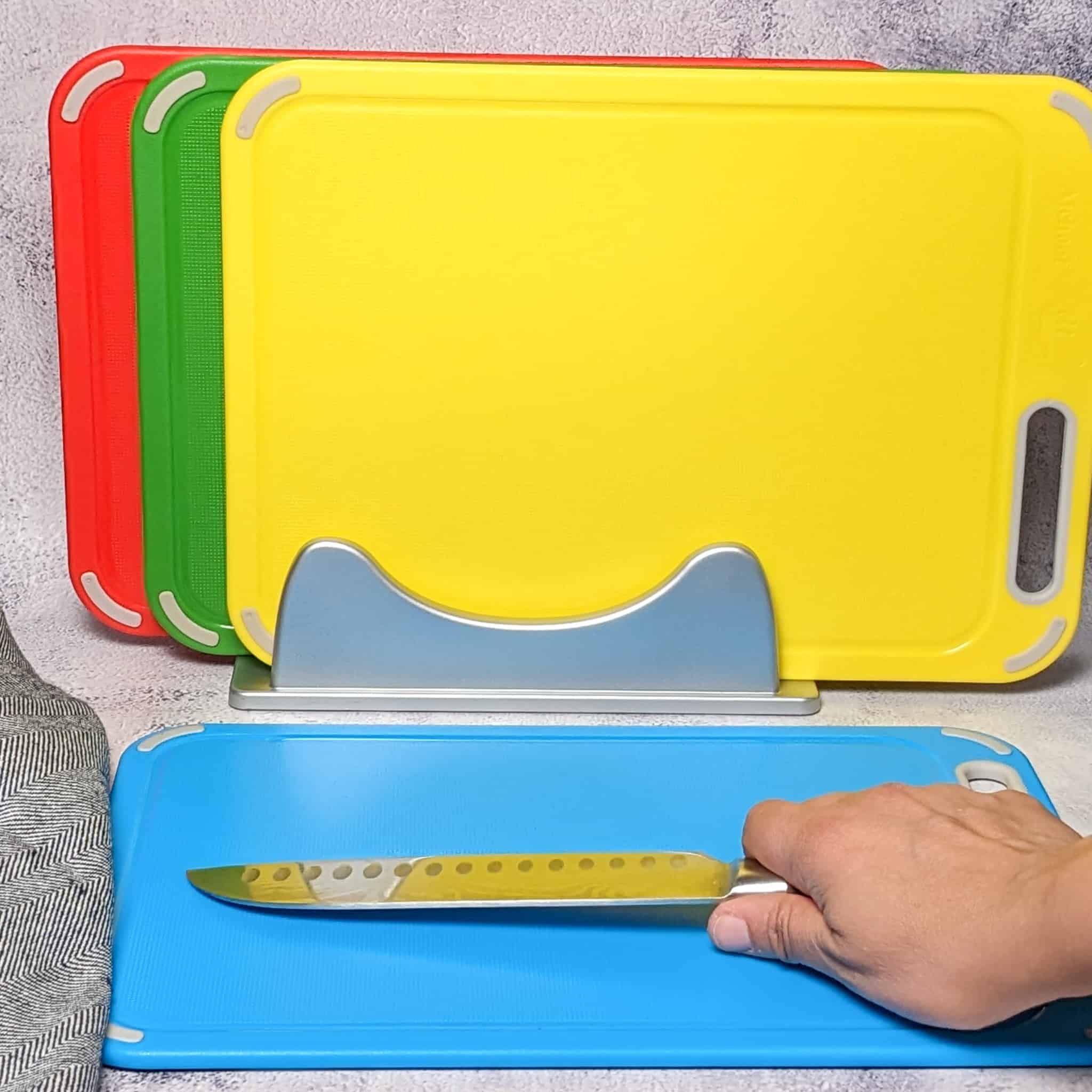



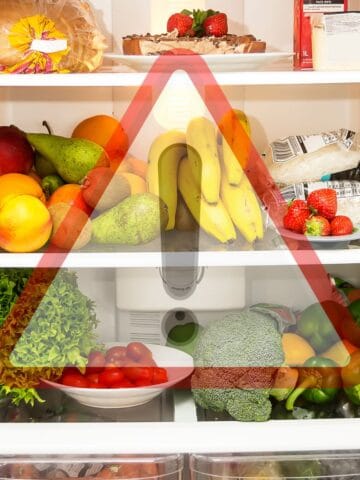
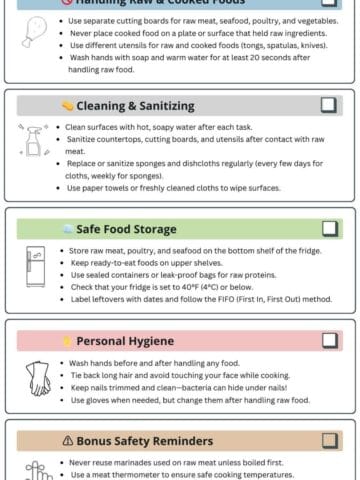

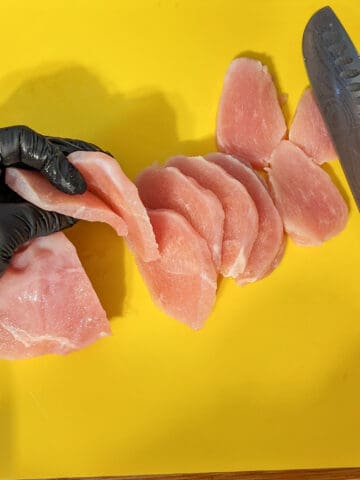

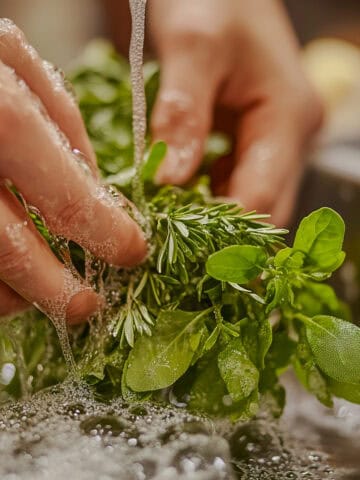
Leave a Reply